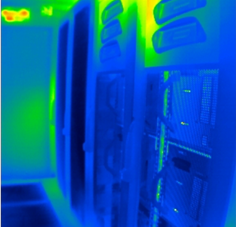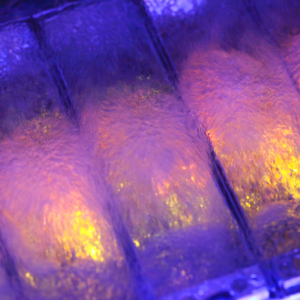The ISL group consists of 12 professors, 3 of them Assistants, and a total of 12 Doctorates, as well as a large number of researchers in the process of doing their doctoral thesis, bringing the total to 28 people. The group carries out its R&I and teaching work at the Electronic Engineering Department at the Higher Technical School for Telecommunications Engineers in the field of integrated systems, covering their various stages, from designing integrated circuits to their applications in numerous sectors of what is today known as the "Internet of Things" (IoT).
Site card
Integrated Systems Laboratory (ISL)
LSI
Structure: Research Groups
The group's work covers the various stages from R&D up to innovation, in a wide range of subjects, with the purpose of providing technological solutions in the field of integrated systems. Therefore, the main lines of research are as follows:
- Microelectronics: Design of variation-tolerant circuits (process, temperature, pressure, ageing and radiation) and VLSI.
- Specific, high-spec digital architectures on reconfigurable platforms (FPGAs). Hardware acceleration.
- EDA tools for designing electronic systems.
- Design of embedded systems, wireless sensor networks, cognitive radio and applications with these technologies, including optimising performance, security and energy consumption.
- Optimising energy in data centres.
- Energy smart systems
- High-performance digital architectures
- Microelectronics: Design and EDA tools
- System on-chip (SoC) Design and consumption optimization
Members of the ISL have taken part in a large number of national and international projects, both competitive projects and collaboration agreements with companies. There is also extensive activity on several Technology Platforms, nationally and Europe (Security ¿eSEC¿, Construction ¿PTEC¿, TIC ¿PLANETIC and ARTEMIS¿), the lab is a member of the HiPEAC Network (European Network of Excellence on High Performance and Embedded Architecture and Compilation) and the SKA worldwide consortium (Square Kilometre Array) for the construction of the SKA super radio telescope which will have a one square kilometre surface. Some important projects are as follows: Nanometric CMOS circuits variation tolerance; Systems HW acceleration in the field of Computational Fluid Dynamics; Wireless sensor networks, development of IoT services; Early warning systems for road safety, and Monitoring critical structures.
The group also has two licensed patents, showing its commitment to the transfer of knowledge generated by the research results to industry and society.
Showing all 3 results
-
Application-aware and resource-aware holistic method and tools to decrease energy consumption in data centers beyond the state of the art
-
Maximum efficiency in microelectronics. Ultra-compact, low-energy smart sensor for on-chip temperature control: optimisation and reliability of electronic devices.
-
Bringing tech to the edge. Optimised data centre blocks for specific applications, cooled by two-phase immersion.







